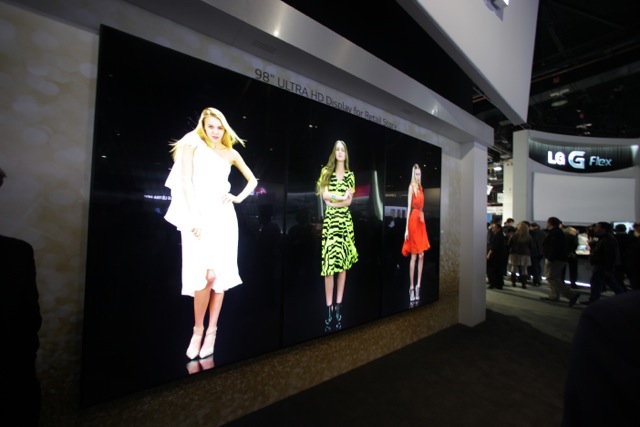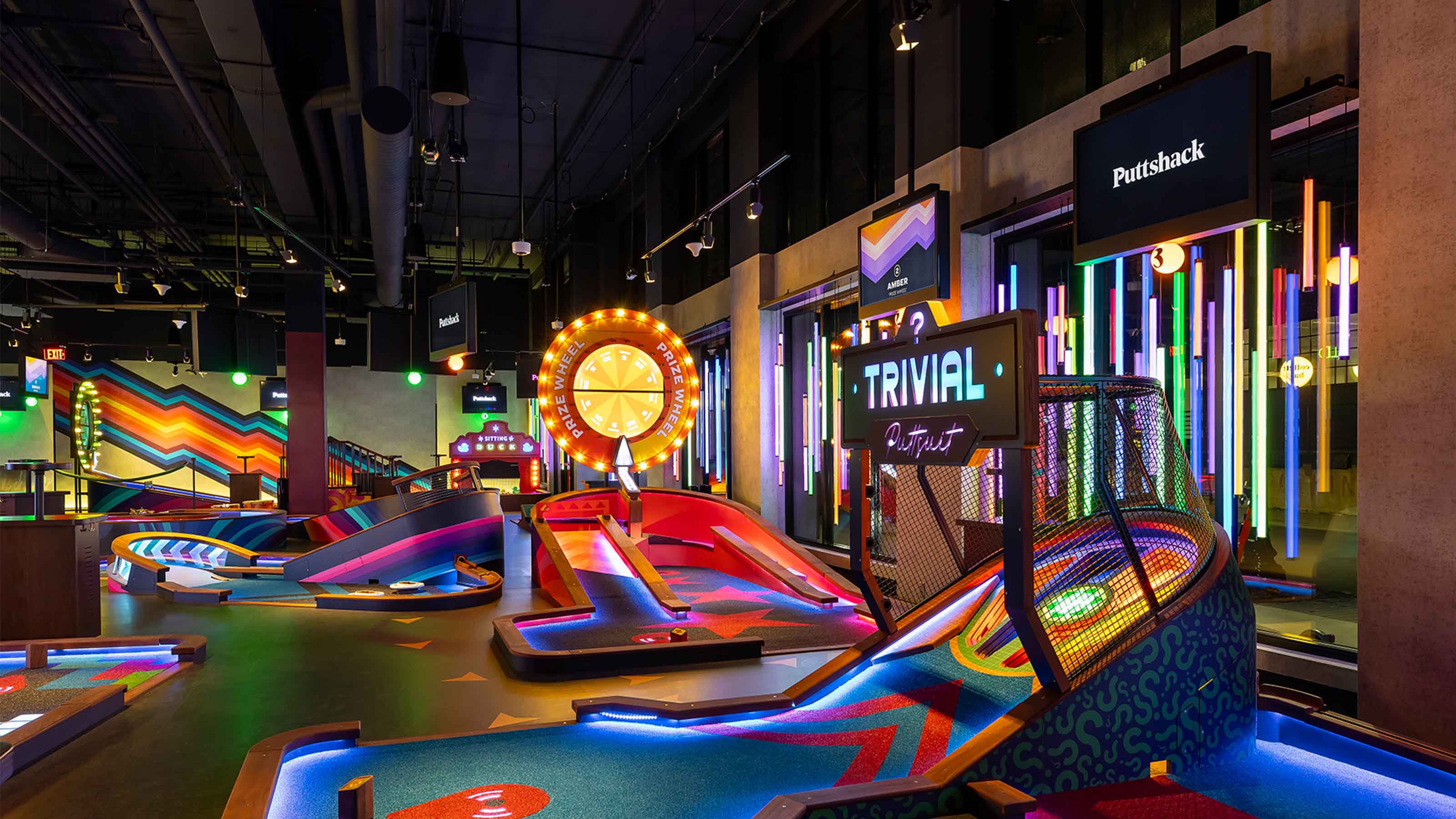Collaborative Experience is Driving Display Development

We haven’t done away with the stuff entirely, but these days our exchanges with colleagues, customers, and students is much less about paper and much more about screens. And, as smartphones have conditioned us to presume that every screen will do something if we simply press a finger up against it, the demand for displays that offer more than passive viewing—regardless of their form factor—is shaping how collaboration happens in both the enterprise and the classroom.
“The adoption of multi-touch capabilities has been explosive and is likely to continue,” noted Jennifer Davis, vice president of marketing and product strategy at Planar Systems Inc., a display manufacturer based in Hillsboro, Oregon. She adds that this, among other trends, is being driven by advances in technology and more affordable price points, as well as “more customers seeing what is possible with the technology.”
With video being ubiquitous in every facet of our lives, one wonders: what will display developers think of next? Largely, continued adoption of 4K (and, eventually, 8K), with a few twists.
4K is Still the Future…for Now
While 4K still remains in its infancy, it will become more prevalent in both the enterprise and higher ed as the price of the technology decreases, predicts Keith Yanke, senior director of product marketing at NEC Display Solutions, headquartered in Itasca, Illinois. “It will be a space where you will see the pricing drop significantly over the next few years, especially on these larger screen sizes once yield rates can come up,” he said. He also notes that the application of 4K resolution will continue to expand, whether it be from a standard PC all the way to multiple full HD resolutions on the screen at once, sourced from several different users.
And then, of course, there’s 8K, which is closer than some might think. “I believe it took us maybe four or five years to go from full 1080p to 4K, so we’re probably another four years away from really seeing 8K-type resolution in displays in the market,” said Rudolf Vitti, group manager for displays at Panasonic.
Touchy-Feely
A daily selection of features, industry news, and analysis for AV/IT professionals. Sign up below.
“When you look at video displays, they’ve got to be interactive—and ‘interactive’ can mean in various ways that we’re seeing now already with touch, or maybe gesture-based, or even things like Siri, where they’re voice-activated,” said Dana Corey, vice president of global sales at video wall and collaboration technology developer Prysm, based in San Jose, California.
Hand-in-hand (pun intended) with interactive technology is the amount of content that displays will be able to accommodate—a trend that Corey attributes to our increased comfort with consuming multiple sources of content on the same screen. “The convenience of giving me more data at one time is, I think, a future requirement around the video display,” he said. “You will see this increase in content, and dynamic window-sizing where you can re-size the content to fit the space and push things around, and really engage with the content you want when you want it.”

LG's new 98-inch UHD model
Yes, Bigger is Better
This desire to view and manipulate more content simultaneously is already driving the demand for larger displays. “I think we’re going to see a continuing trend for larger, higher-res, better quality images,” said Dan Smith, senior director of sales at LG Electronics USA, headquartered in Englewood Cliffs, New Jersey, which recently launched a 98-inch Ultra High-Definition (UHD) display. He notes that classroom applications—especially in higher education, where engineering and medical studies involve the display of large-scale, high-detail imagery—can benefit from increased screen sizes, which can accommodate the display of more content.
High Brightness, Low Energy
While brightness is a high priority, it also comes at a cost—not just for the actual technology itself, but the power that it traditionally consumes. Burt Smith, executive vice president for business development at display products manufacturer NanoLumens explains that one of the company’s missions is to deliver high output while keeping power consumption at a minimum. “It sounds like a simple feature, but it’s really a big deal,” he said, noting that the more power units consume, the more heat they generate, which then leads to increased need for climate control. “In casinos, for example, you can’t be projecting heat onto people; it makes them uncomfortable.”
Just Engaged
Because they’re no longer simply there for passive viewing, questions around the application of display technology should focus on not only the display, but the experience it’s helping to create, Corey argues. “Truly, the best experience is when you don’t experience the technology; it’s when you just experience the experience,” he said. “[This means] displays that basically give you that non-technology feel, that integrate into the architecture, that integrate into the flow of life, whether it’s the enterprise, higher ed, or whatever it is. You just feel like you’re engaged with it.”
And sometimes this seamless integration into the landscape translates into display technology that is, quite literally, lighter. NanoLumens’ NanoClear is a slim, ultra-lightweight, clear display that uses nano-optical particle diffusion, giving the illusion that images are floating in space. “We can hang this sheet of plastic, which is millimeters thick and weighs virtually nothing in the context of display technology, and provide an experience that’s transparent and translucent,” Smith explained, “which allows you to set the mood in an environment very differently than if you were hanging a solid display there, or even if you used an LED curtain-type technology, or wall.”
Behind Every Good Display...What’s in Store for Projectors?
A number of manufacturers are making projection technology more accessible with the advent of fine-pitch LED systems. “That product could end up being part of the video wall and display space moving forward,” said Keith Yanke, NEC Display Solutions, which showcased its 2mm-pitch LED technology at InfoComm 2015. Yanke notes that fine-pitch LED won’t be reserved for the extremely large displays, such as commercial signage; it will also be applicable indoors, in spaces such as conference rooms. The catch? It’s expensive, for now at least.
- “Maintenance-free” is also the way of the future when it comes to projectors, thanks to the shift from lamp-based to laser technology. “Laser provides the benefits of maintenance-free if you design [the projectors] properly, because they have no filters in them that ever need cleaning,” explained Karl DeManss, product manager for projection at Panasonic. The average lifecycle for this technology being 20,000 hours, a considerable number of facilities can get away without changing the replacing the systems for close to a decade, he says. “Basically, you can hang it and forget about it.”
Carolyn Heinze is a regular contributor to NewBay Media's AV Technology magazine.
Carolyn Heinze has covered everything from AV/IT and business to cowboys and cowgirls ... and the horses they love. She was the Paris contributing editor for the pan-European site Running in Heels, providing news and views on fashion, culture, and the arts for her column, “France in Your Pants.” She has also contributed critiques of foreign cinema and French politics for the politico-literary site, The New Vulgate.
